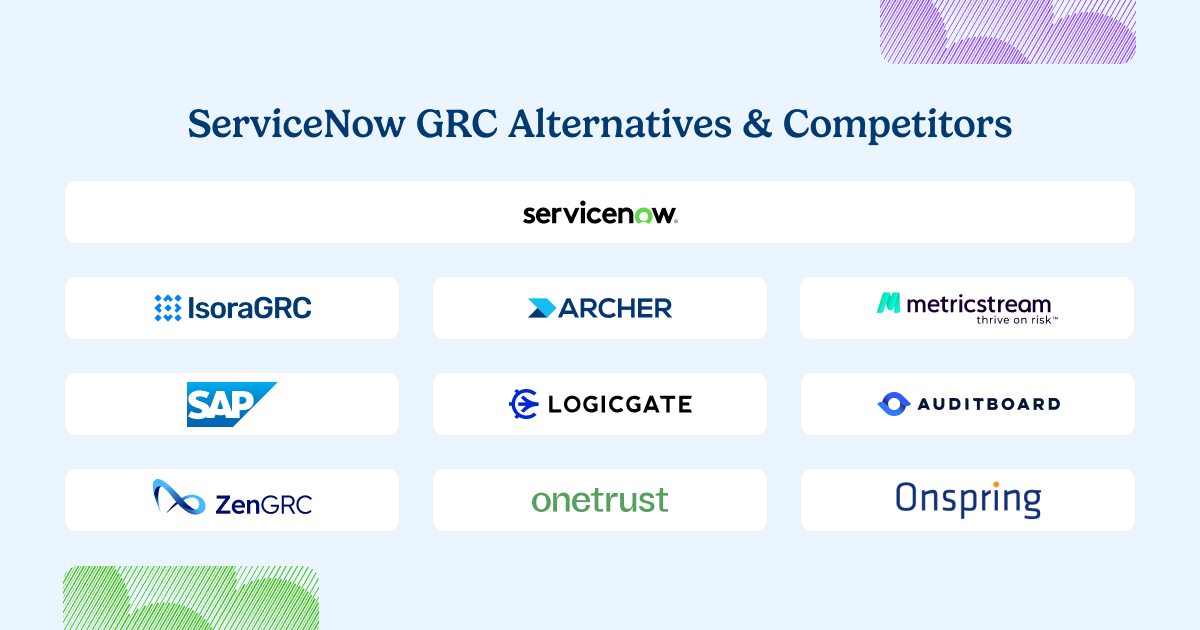
ServiceNow GRC is a natural choice for organizations already invested in the ServiceNow ecosystem. It extends the platform’s IT service management capabilities into governance, risk, and compliance. But for security teams, the experience often falls short.
ServiceNow GRC is built for IT operations—not for the day-to-day needs of information security risk management. Workflows are rigid, implementation is resource-heavy, and getting broad team adoption can be a challenge.
Tools like ServiceNow GRC fall into the category of all-in-one GRC platforms—versatile, but often overbuilt for security teams trying to move fast.
Why Teams Look for Archer Alternatives
| Common Limitation | Why It’s a Problem | What to Look for Instead |
| Built around IT service management | Doesn’t reflect how security teams manage risk | Purpose-built workflows for information security teams |
| Heavy implementation and maintenance | Requires developers and long timelines | No-code setup and fast time to value |
| Limited usability outside of core IT users | Difficult to engage stakeholders in risk workflows | Intuitive platform built for cross-functional adoption |
| Disconnected from hands-on risk remediation | Lacks exception tracking tied to assessments | Integrated exception and risk register workflows |
What to Look for in a OneTrust GRC Alternative
- Structured workflows for assessments, inventories, and exception tracking
- Fast deployment without deep technical lift
- A platform that supports both security teams and business users
- Built-in features that enable ongoing collaboration and remediation
- Clear separation from ITSM-focused design—and a focus on risk ownership and accountability
Top Archer IRM Alternatives
1. Isora GRC
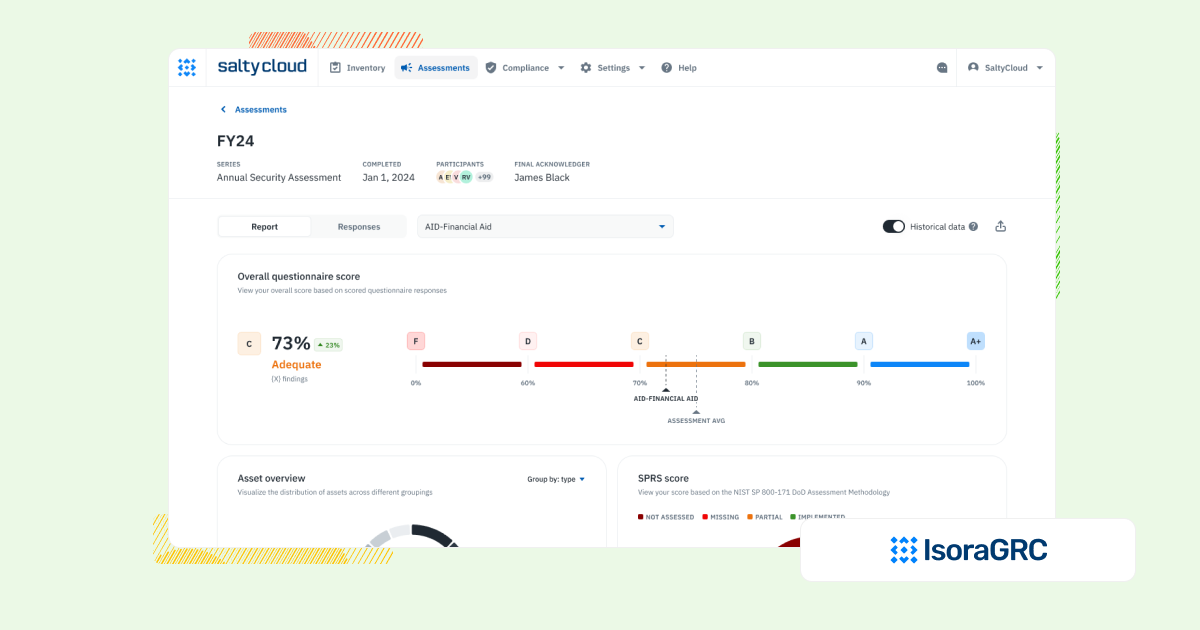
| Category | Details |
| Best For | Security teams that need to operationalize IT and third-party risk management across assets, third-party vendors, and business units. |
| Overview | Isora GRC is the GRC Assessment Platform™ built specifically for information security teams. It supports the full risk workflow, from assessments and questionnaires to risks, inventory, and reporting, without the complexity of legacy GRC tools or the limitations of audit-first platforms. |
| Strengths | Built for workflows, not checklists
✅ Supports assessments, inventory tracking, risk registers, and exceptions in a unified experience. Designed for org-wide adoption ✅ WCAG-compliant UX that requires no training and makes risk everyone’s job. Fast time-to-value ✅ Live in days or weeks, with no-code setup and minimal lift from IT. Flexible by default ✅ Customizable assessments, scalable categories, and framework mapping without heavy configuration. Scales across teams and vendors ✅ Works equally well for internal teams and third-party risk management programs. |
| Limitations | ⚠️ Not designed for legal, audit, or finance teams seeking one platform for enterprise-wide GRC
⚠️ May be too structured for teams looking to build one-off surveys or lightweight audits without repeatable workflows |
| When to Consider | If you need a modern risk platform built for continuous use, with workflows your security team will actually adopt, without the complexity and ITSM-first limitations of all-in-one GRC platforms like ServiceNow. |
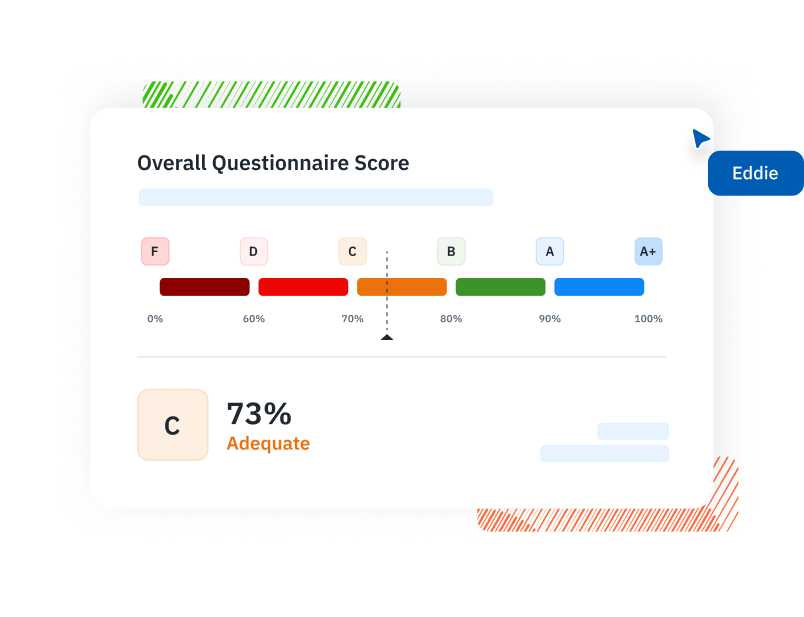
2. Archer IRM
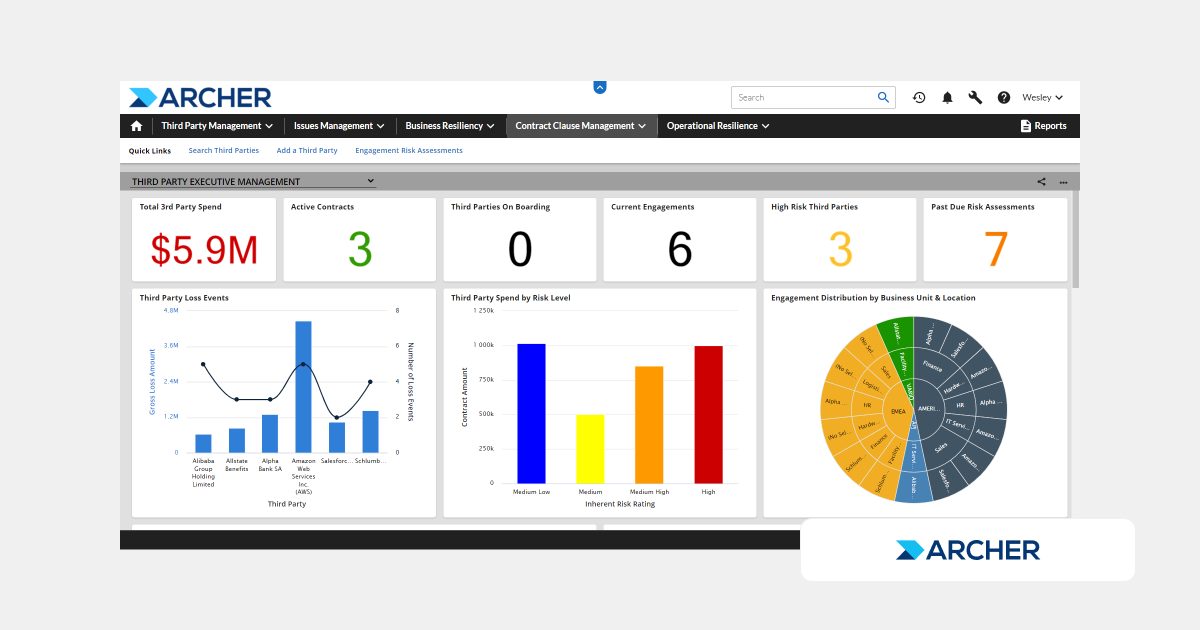
| Category | Details |
| Best For | Large enterprises with formal governance programs that can support a high-complexity, high-overhead GRC platform. |
| Overview | Archer IRM is a well-known, enterprise-grade GRC system designed for managing risk, audit, and compliance across the organization. While powerful, it’s slow to implement and lacks the intuitive workflows security teams need for IT and vendor risk management. |
| Strengths | ✅ Deep configurability for enterprise governance and compliance programs
✅ Widely used across regulated industries for audit and policy management |
| Limitations | ⚠️ Long rollout timelines and high admin overhead
⚠️ Workflows are not purpose-built for modern, fast-moving security teams |
| When to Consider | If you’re managing a broad enterprise GRC program but can work around the lack of agility and built-in support for day-to-day risk operations and exception tracking across teams. |
| Other Comparisons | Archer IRM vs ServiceNow GRC vs Isora GRC
LogicGate vs Archer IRM vs Isora GRC ZenGRC vs Archer IRM vs Isora GRC |
3. MetricStream
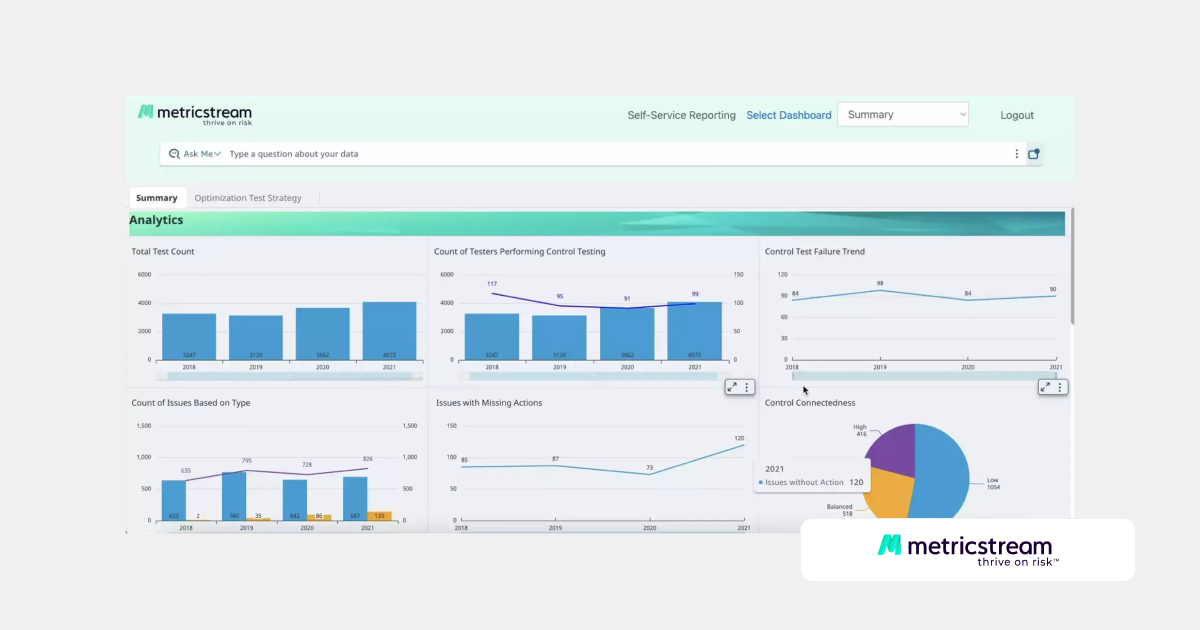
| Category | Details |
| Best For | Global organizations needing centralized oversight across risk, compliance, and business units. |
| Overview | MetricStream is another all-in-one GRC platform designed for enterprise-scale risk management. Like ServiceNow, it offers broad coverage but often lacks the usability and speed security teams need to run assessments, manage vendors, and act on exceptions efficiently. |
| Strengths | ✅ Covers complex governance and regulatory requirements at scale
✅ Strong reporting and audit trail capabilities across departments |
| Limitations | ⚠️ Complex to implement, with long lead times and high resource needs
⚠️ Not optimized for IT risk workflows, vendor tracking, or rapid team adoption |
| When to Consider | If you need centralized oversight across risk functions but can work around the heavy configuration burden and limited support for task-based security team workflows. |
| Other Comparisons | MetricStream vs SAP GRC vs Isora GRC |
4. SAP GRC
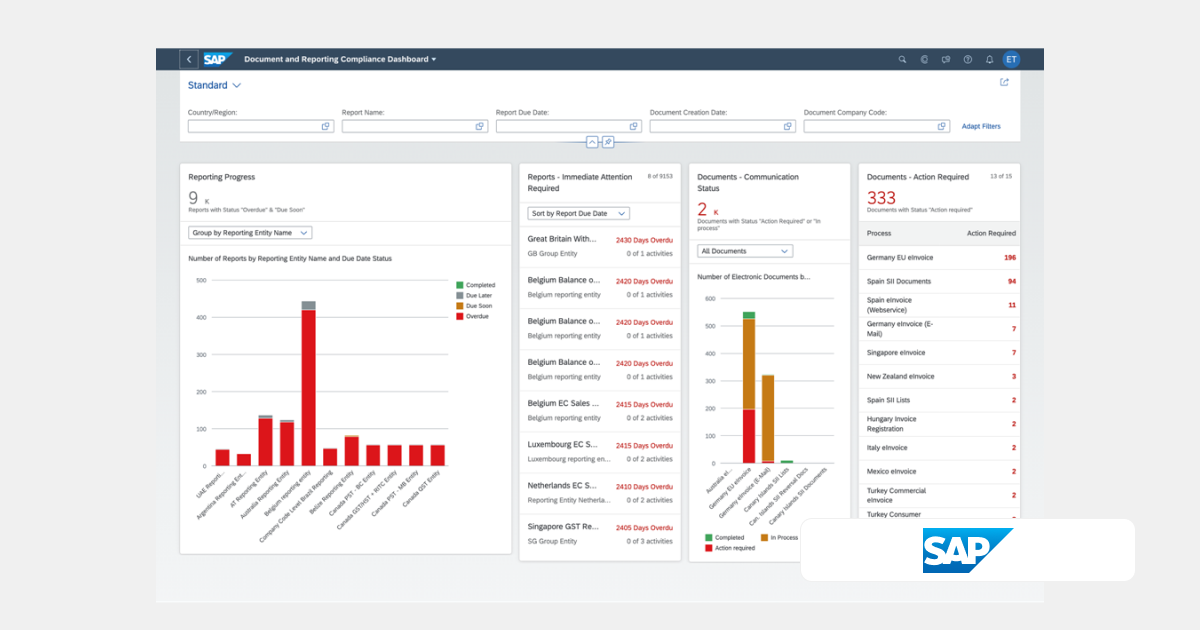
| Category | Details |
| Best For | Enterprises already deeply embedded in SAP systems needing governance and compliance across financial and operational workflows. |
| Overview | SAP GRC is tightly coupled with SAP’s ERP and finance tools. While it’s useful for managing policies and controls within SAP, it lacks the agility and user experience needed for collaborative IT risk workflows or modern third-party risk assessments. |
| Strengths | ✅ Deep integration with SAP business applications
✅ Strong control enforcement and audit management for finance and operations |
| Limitations | ⚠️ Rigid, outdated user interface not built for modern security teams
⚠️ Doesn’t support flexible risk assessments or cross-functional exception tracking |
| When to Consider | If you rely heavily on SAP and need to manage controls inside that environment but can work around limited support for IT risk, asset assessments, and vendor risk collaboration outside of core SAP modules. |
| Other Comparisons | MetricStream vs SAP GRC vs Isora GRC |
5. LogicGate
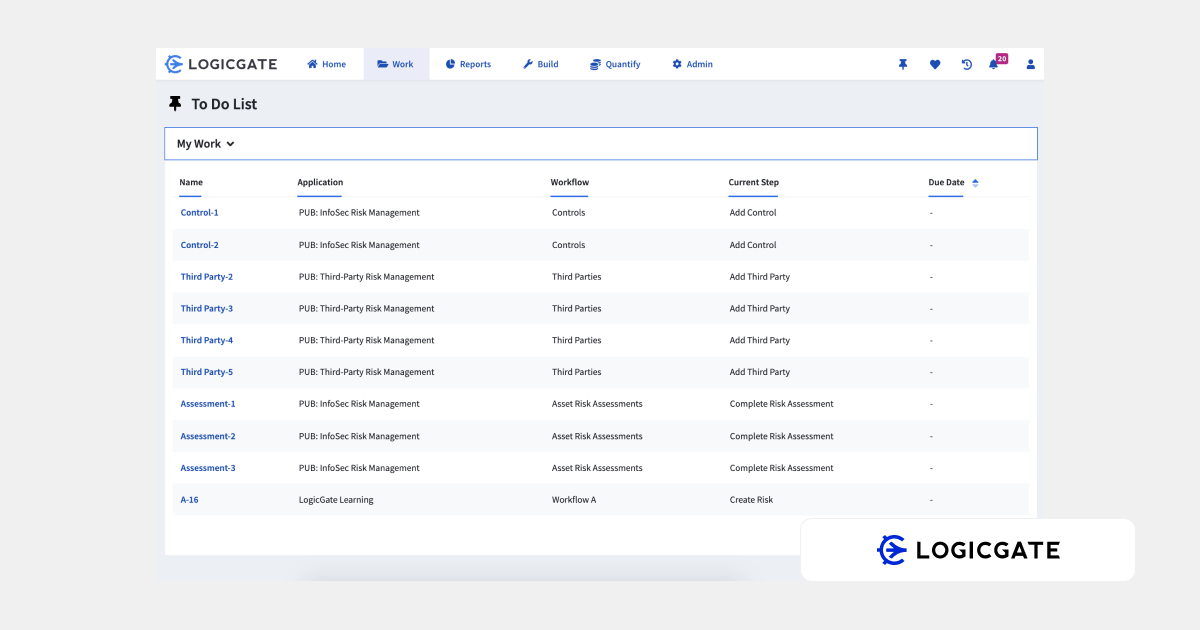
| Category | Details |
| Best For | Security and compliance teams who want full control over how risk processes are designed and automated. |
| Overview | LogicGate provides a visual, no-code platform for building custom workflows across GRC programs. It’s more flexible than ServiceNow, but also requires time and resources to build structure from scratch, especially for teams managing IT assets and vendor risk. |
| Strengths | ✅ Fully customizable workflows for risk, compliance, and third-party programs
✅ Supports automation and mapping to frameworks like NIST and ISO |
| Limitations | ⚠️ Slower to implement and requires design effort from admins or analysts
⚠️ May lack out-of-the-box workflows needed for security teams to move quickly |
| When to Consider | If you want to build a fully customized GRC environment but can work around slower setup and the lack of prebuilt structure for IT risk and vendor oversight workflows. |
| Other Comparisons | LogicGate vs Archer IRM vs Isora GRC |
6. AuditBoard
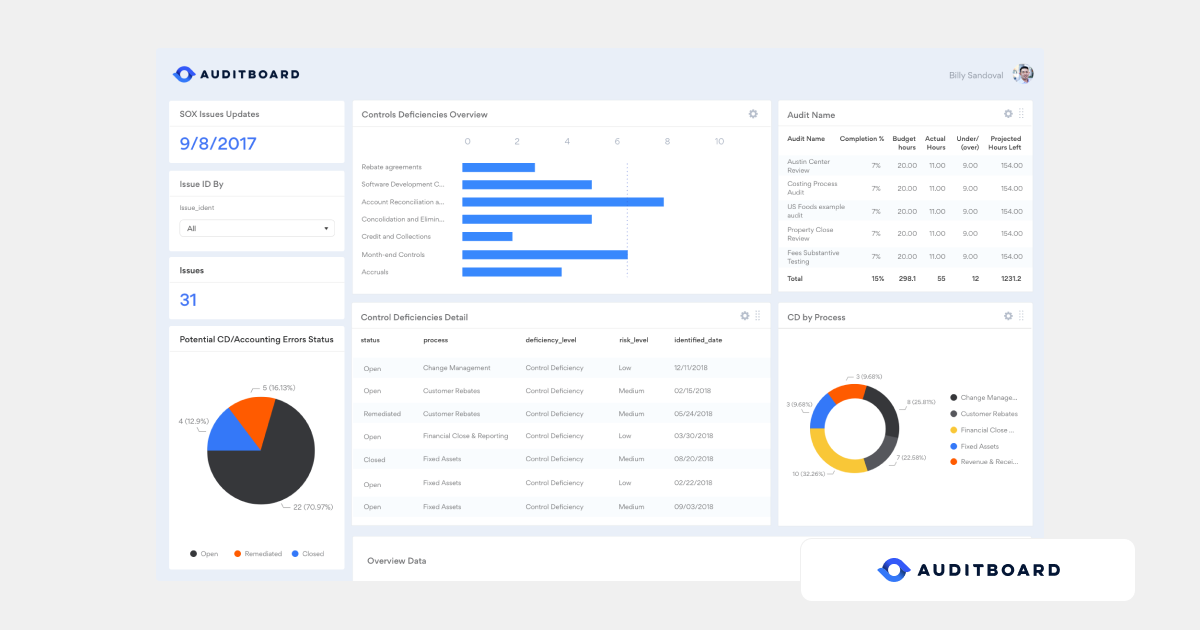
| Category | Details |
| Best For | Internal audit and compliance teams managing documentation, evidence, and control testing at scale. |
| Overview | AuditBoard is designed around audit readiness and compliance documentation. While it offers solid tools for audit teams, it doesn’t provide the flexible risk workflows or IT-specific tracking needed for managing security risks, exceptions, or vendors. |
| Strengths | ✅ Strong for managing internal controls, audit documentation, and SOX workflows
✅ Easy-to-use for compliance teams and auditors |
| Limitations | ⚠️ Not built for security-first workflows like asset-based risk assessments or vendor tracking
⚠️ Lacks collaboration features across technical teams and decentralized stakeholders |
| When to Consider | If your work is audit-focused and control-heavy but you can work around the limited flexibility for hands-on IT and third-party risk workflows used by security teams day-to-day. |
| Other Comparisons | AuditBoard vs ServiceNow GRC vs Isora GRC |
7. ZenGRC
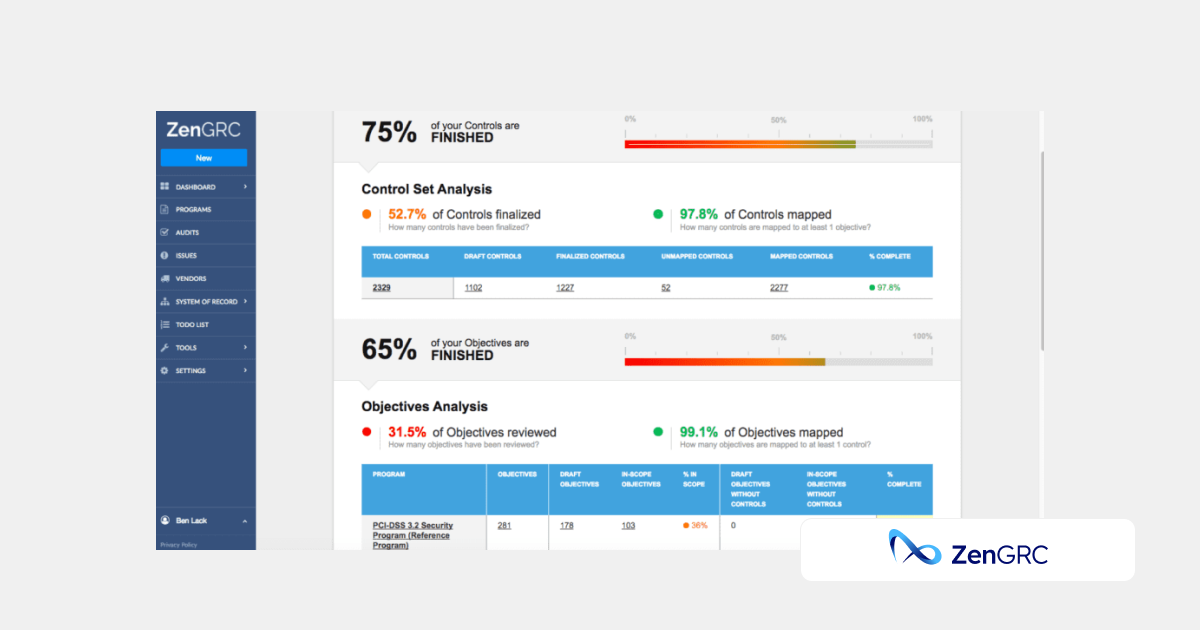
| Category | Details |
| Best For | Smaller teams managing compliance tasks and audits with a lightweight platform. |
| Overview | ZenGRC is designed to simplify compliance documentation and audit readiness. It’s easy to use and fast to implement, but it’s checklist-driven, making it a poor fit for teams that need deeper risk workflows, asset inventories, or vendor risk tracking. |
| Strengths | ✅ Quick setup and clean interface for managing audits and compliance
✅ Prebuilt templates for frameworks like SOC 2, ISO, and NIST |
| Limitations | ⚠️ Not designed for IT risk management or exception tracking across systems and vendors
⚠️ Lacks flexibility and depth for mature or fast-moving security teams |
| When to Consider | If you need a simple compliance tracker but can work around the limited support for structured risk assessments and third-party risk programs across business units. |
| Other Comparisons | ZenGRC vs AuditBoard vs Isora GRC |
8. OneTrust GRC
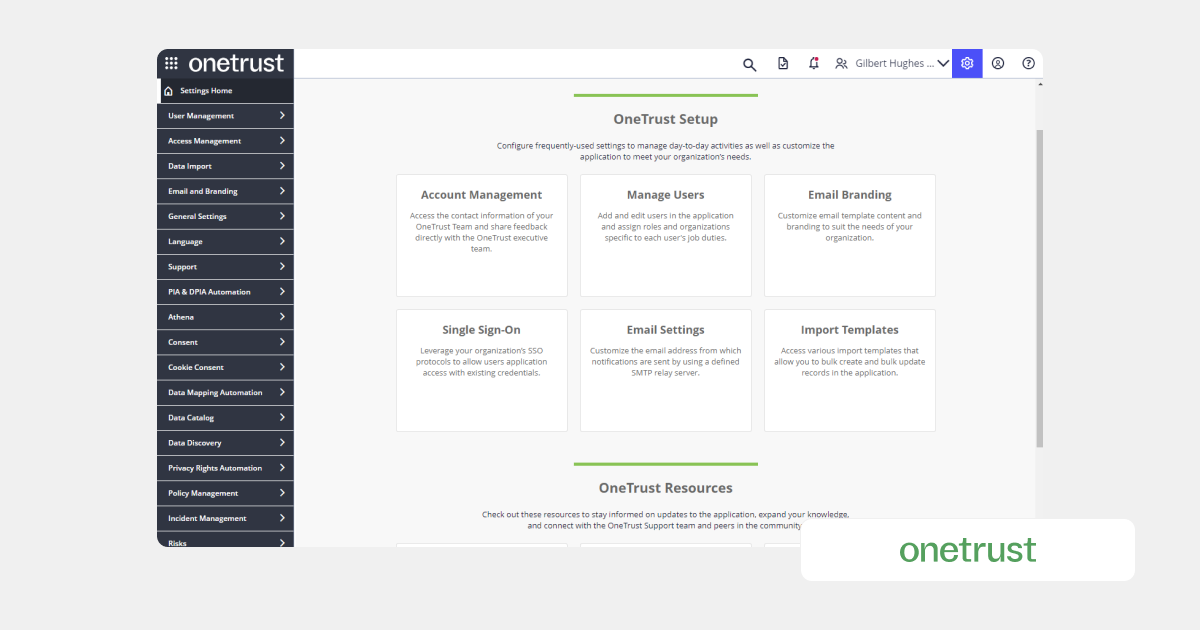
| Category | Details |
| Best For | Organizations focused on privacy, data governance, and vendor compliance but not full IT risk management. |
| Overview | OneTrust offers privacy and compliance tools. While it has GRC extensions, they often center on policies and documentation, not structured, actionable workflows for IT and security teams. |
| Strengths | ✅ Covers a wide range of privacy laws and third-party compliance requirements
✅ Includes assessment templates like CAIQ, SIG, and HECVAT |
| Limitations | ⚠️ Built around privacy and regulatory workflows, not operational risk management
⚠️ Hard to use for security assessments, asset inventories, or ongoing exception tracking |
| When to Consider | If your focus is on vendor and privacy compliance but you can work around the limited functionality for internal risk assessments and cross-functional security team collaboration. |
| Other Comparisons | OneTrust vs ServiceNow GRC vs Isora GRC |
9. Onspring
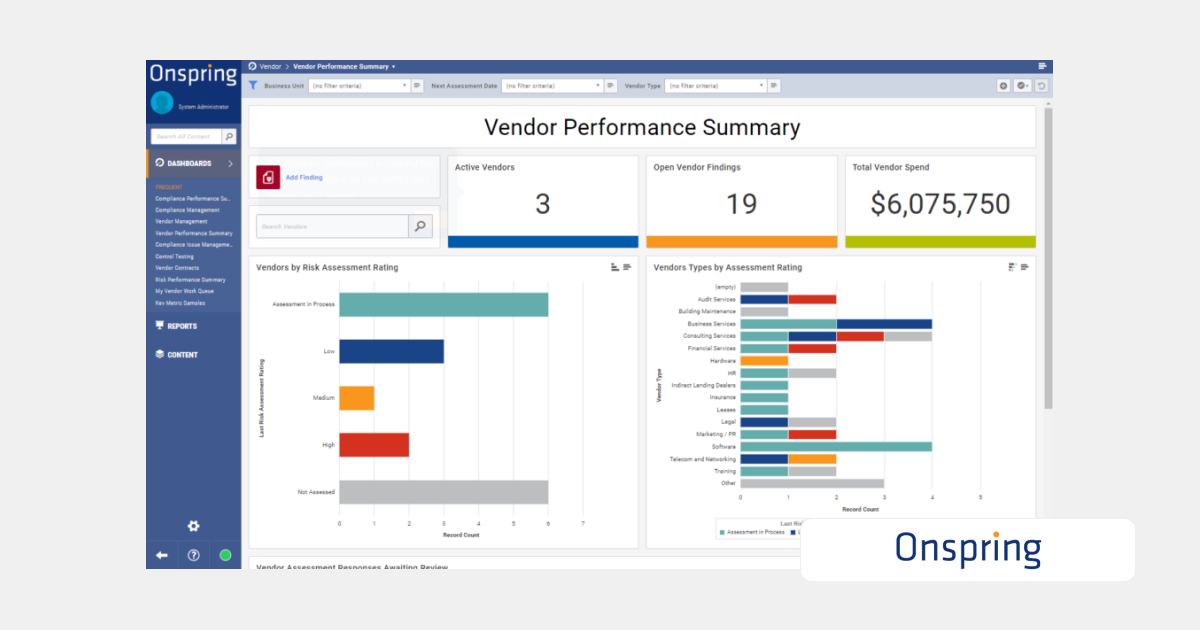
| Category | Details |
| Best For | Teams that want to build their own compliance and risk workflows using a flexible no-code platform. |
| Overview | Onspring allows teams to design and manage risk, audit, and compliance workflows without coding. While highly customizable, it requires a lot of setup, making it less ideal for security teams needing ready-to-use tools for IT risk, asset tracking, and vendor assessments. |
| Strengths | ✅ No-code configuration for building internal GRC processes
✅ Useful for departments with complex approval and documentation flows |
| Limitations | ⚠️ Requires time and planning to build and maintain custom workflows
⚠️ May be too broad or slow for security teams managing fast-paced risk programs |
| When to Consider | If you need to build governance workflows from scratch but can work around the lack of prebuilt risk tools, IT asset logic, and vendor lifecycle support out of the box. |
| Other Comparisons | Onspring vs AuditBoard vs Isora GRC |
What Our Customers Say About Isora GRC
Security teams at top institutions are using Isora GRC to replace legacy tools and manual processes with intuitive workflows and actionable insight.
“Moving from manual processes to using Isora was a breath of fresh air. What used to take months is now automated, reliable, and defensible. Isora saves us significant time while delivering accurate insights that improve decision-making.”
Jessica Sandy, IT GRC Manager, The University of Chicago
“Isora has been essential in helping us meet our University of California cybersecurity requirements across a decentralized campus. Automating assessment data collection and reporting has given us clear visibility into unit-level risks, enabling us to prioritize resources effectively and address gaps with confidence.”
Allison Henry, CISO, The University of California, Berkeley
FAQs
What are some alternatives to ServiceNow GRC?
ServiceNow GRC belongs to the category of all-in-one enterprise platforms, often tied to broader IT service management workflows. Alternatives like Isora GRC offer purpose-built solutions for IT and third-party risk teams who need structured workflows, faster deployment, and stronger usability across business units.
Why do teams switch from ServiceNow GRC to platforms like Isora GRC?
Security teams often find ServiceNow GRC too complex and IT-centric for managing risk assessments and remediation. Long setup times, reliance on developers, and limited engagement from non-technical users make it difficult to operationalize risk. Isora GRC offers a simpler, more focused alternative with workflows security teams can own and run.
Does Isora GRC replace tools like ServiceNow GRC or complement them?
In most cases, Isora GRC replaces ServiceNow GRC for teams managing IT and vendor risk. While ServiceNow excels at IT operations, Isora provides purpose-built workflows for assessments, risk tracking, exception management, and collaboration—without the friction of traditional enterprise platforms.
Which platform is better for managing cross-functional security assessments?
ServiceNow GRC may support assessments as part of a larger ITSM framework, but adoption can be difficult outside the IT department. Isora GRC was built to enable participation across technical and non-technical teams—making it ideal for distributed risk programs that depend on engagement.
What should I look for in a ServiceNow GRC alternative?
Look for fast implementation, structured workflows for assessments and exceptions, and usability across stakeholders. A strong alternative should help security teams work independently of IT and scale their risk programs without complexity. Isora GRC delivers on all of these fronts.
This content is for informational purposes only and does not constitute legal or compliance advice. See our full disclaimer.


















